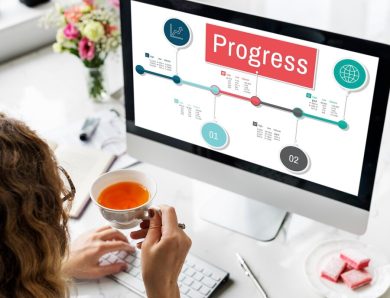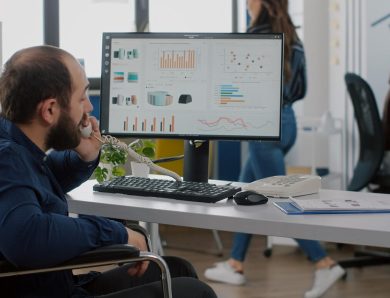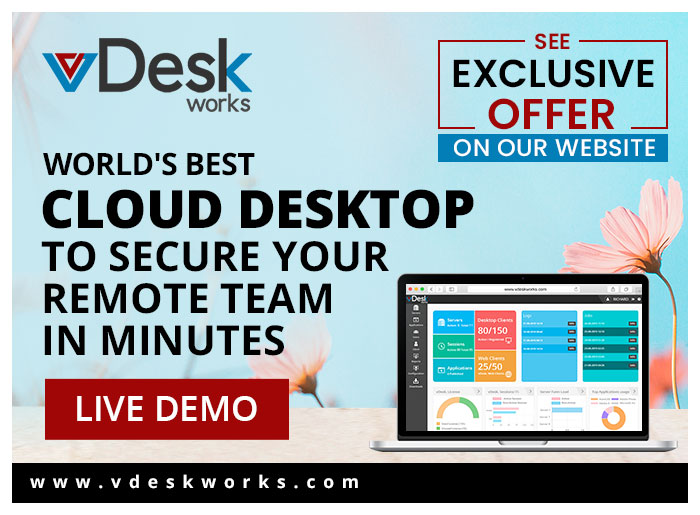
Beyond Tracking: How Asset Management Software Boosts Employee Accountability
In today’s fast-paced business world, the effective management of assets—whether physical or digital—is a key factor in driving operational efficiency and profitability. Traditional methods like spreadsheets and manual tracking are quickly becoming obsolete, especially as businesses scale and require more streamlined processes. However, modern asset management software not only offers the ability to track assets in real-time but also plays a crucial role in boosting employee accountability across an organization.
1. Real-Time Tracking Promotes Transparency and Ownership
One of the main ways that asset management software fosters accountability is by providing real-time tracking. With features like RFID tracking, GPS integration, and barcode scanning, employees can instantly access information on the location, status, and history of any asset. This transparency ensures that employees understand the significance of the assets they manage and use, reinforcing a sense of ownership.
When employees know that their actions regarding assets are tracked in real time, they are more likely to handle equipment, inventory, and tools responsibly. Knowing that their movements and usage are recorded prevents neglect or misuse, creating a stronger sense of personal responsibility. This leads to improved asset care and reduced losses or mismanagement.
2. Automated Alerts and Maintenance Scheduling Ensure Accountability for Asset Care
Beyond just tracking, asset management software also automates critical maintenance schedules. Features like life cycle management and maintenance tracking ensure that employees are held accountable for scheduled tasks. When an asset is due for maintenance or inspection, the system automatically sends reminders to the relevant employees or teams. This reduces the chances of skipped or forgotten maintenance, which can lead to equipment failures or unnecessary replacements.
Automated alerts ensure that no maintenance task falls through the cracks, helping employees stay accountable for the care of assets. With task reminders and checklists, employees are guided through the necessary procedures, ensuring that the proper steps are followed for upkeep. As a result, businesses can extend the life of their equipment, improve performance, and reduce downtime.
3. Streamlined Check-Out and Check-In Process Increases Responsibility
Asset management software often includes a self-checkout feature, where employees can check out and return assets through the system. This process adds an extra layer of accountability by linking each asset to an individual user. When employees sign out equipment, tools, or supplies, they are directly responsible for its safe return.
This is particularly effective in environments like warehouses, construction sites, or offices where multiple people may need to access the same assets. By tracking who checked out an item and when it was returned, businesses can easily identify any issues such as missing or damaged assets. This accountability system ensures that employees take better care of equipment, knowing that they are responsible for its condition.
4. Customizable Access Controls Limit Misuse and Encourage Responsibility
Another critical feature that asset management software offers is customizable access controls. Businesses can set specific permissions for different employees, limiting their access to certain assets or functions within the software. For example, employees may be allowed to view assets but not edit their information, or certain tools may only be accessible to specific departments or individuals.
By assigning clear roles and responsibilities, employees are aware of the scope of their accountability. This minimizes the chances of misuse or unauthorized access to valuable assets, ensuring that each employee is accountable for their designated tasks and assets. Custom access control can help organizations maintain a higher level of security and ensure that only authorized individuals can make changes to the system or move high-value assets.
5. Enhanced Reporting for Performance Tracking
Asset management software provides detailed reports on asset usage, maintenance history, and overall performance. These reports are invaluable for tracking how assets are being used across the organization and identifying trends that may point to issues with employee accountability. For instance, if certain equipment is being used more frequently than others or is showing signs of damage, these reports can help identify whether the issue stems from improper usage.
By using reports to track individual and team performance, managers can assess how well employees are managing assets, pinpoint any patterns of misuse, and implement corrective actions where necessary. This data-driven approach helps foster a culture of accountability, where employees understand that their actions are being closely monitored and evaluated.
6. Improved Asset Utilization through Accountability
When employees are held accountable for the assets they use, it naturally leads to better utilization of those assets. In businesses that rely heavily on equipment or tools, ensuring that assets are properly maintained and returned on time leads to less downtime, better performance, and fewer costly repairs. Employees who feel responsible for the assets they handle tend to use them more efficiently, extending the asset’s life and improving overall productivity.
Moreover, accountability in asset management means that employees are less likely to overlook available resources. For example, if an employee knows that an asset is being shared among teams, they are more likely to make sure it’s returned on time, preventing delays or bottlenecks in production.
Conclusion
Incorporating state-of-the-art asset management software into a company’s workflow does more than just improve asset tracking—it directly enhances employee accountability. With real-time visibility, automated alerts, detailed reports, and customizable access controls, businesses can ensure that their employees are using assets responsibly, maintaining them properly, and returning them on time. The result? A more efficient, productive, and accountable workforce, ultimately driving the business’s bottom line and improving overall ROI.
In today’s competitive landscape, the right asset management software is not just a tool for tracking—it’s a catalyst for fostering a culture of accountability and responsibility within your team.






No Comment